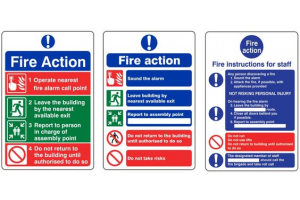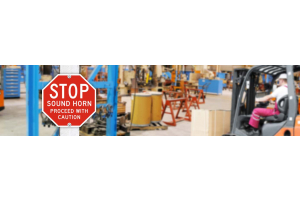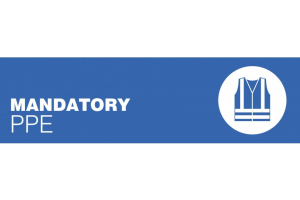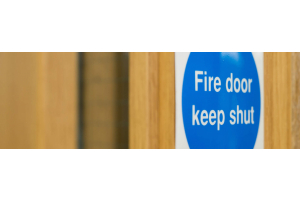
You do!
Whether you are an employer or self-employed, are you sure that you’re up to date with how to identify the hazards and control the risks from your work? Do you know how to get help – from your trade association, your local Chamber of Commerce, or your health and safety enforcing authority? Do you know what you have to do about consulting your employees, or their representatives, on health and safety issues? If not, you would probably benefit from some training. Your managers and supervisors do! If you employ managers or supervisors they need to know what you expect from them in terms of health and safety, and how you expect them to deliver. They need to understand your health and safety policy, where they fit in, and how you want health and safety managed. They may also need training in the specific hazards of your processes and how you expect the risks to be controlled. Your employees do! Everyone who works for you, including self-employed people, needs to know how to work safely and without risks to health. Like your supervisors, they need to know about your health and safety policy, your arrangements for implementing it, and the part they play. They also need to know how they can raise any health and safety concerns with you.
Contractors, self-employed people who may be working for you do! Remember, these people might not be familiar with your working environment and safety systems that you have put in place for regular employees. You should:
- take into account the capabilities, training, knowledge and experience of workers; and
- ensure that the demands of the job do not exceed their ability to carry out their work without risk to themselves and others.
- new recruits need basic induction training into how to work safely, including arrangements for first aid, fire and evacuation;
- people changing jobs or taking on extra responsibilities need to know about any new health and safety implications;
- young employees are particularly vulnerable to accidents and you need to pay particular attention to their needs, so their training should be a priority. It is also important that new, inexperienced or young employees are adequately supervised;
- employee representatives or safety representatives will require training that reflects their responsibilities;
- some people’s skills may need updating by refresher training.
How can I do it?
- Firstly, you should show your commitment so the people being trained recognise that the training is important. You should consult your employees or their representatives on the planning and organisation of the training. You should make sure that you properly prioritise and plan the training needs for your business. You may have appointed somebody to give you ‘competent assistance’ (see ‘The law’) and they should be able to help. Try the following five-step approach; STEP 1 Decide what training your organisation needs
- Identify the skills and knowledge needed for people to do their job in a safe and healthy way. Compare these against people’s current skills and knowledge and identify the gaps
- Review your experience of injuries, near misses or cases of ill health
- Look at your risk assessments to see where information and/or training have been identified as factors in controlling risks
- Consider awareness training needs for everyone, including directors, managers and supervisors, including:
- how you manage health and safety;
- who is responsible for what;
- the cost to the business if things go wrong;
- how to identify hazards and evaluate risks; and
- the hazards encountered and measures for controlling them
- Does the law require you to carry out specific training (eg first-aid training)? See ‘The law’ for more details.
- Priorities should include:
- those where lack of information and/or training might result in serious harm;
- those that benefit the largest numbers of staff;
- new recruits or those new to the working environment;
- people changing jobs, working practices or taking on new responsibilities;
- people using new equipment
- Consult employees or their representatives for their views
- You must provide training during working hours and not at the expense of your employees. Special arrangements may be needed for part-timers or shift workers
- Choose your methods, for example:
- giving information or instruction;
- coaching or on-the-job training;
- training in the ‘classroom’;
- open and distance learning;
- in groups or individually; and
- computer-based or interactive learning
- Consider who can help by providing you with information, materials, training courses etc. You could try for example:
- National Occupational Standards (www.ukstandards.co.uk);
- trade unions or trade associations;
- further education colleges;
- private training organisations;
- independent health and safety consultants;
- employer bodies (eg Chambers of Commerce); and
- qualification awarding bodies
- Look at www.gov.uk to find detailed information and advice on skills and training, including:
- the impact of training on business performance;
- identifying training needs;
- training methods;
- how to set up in-house training;
- how to evaluate your training;
- how to find a training provider or course; and
- learning through networking with others
- Make sure the information is easy to understand and try to use a variety of training methods to deliver your message
- Make sure the trainer has enough time to prepare themselves, their resources and the venue – preparation is particularly important for people who are not experienced trainers
- Do your employees understand what you require of them?
- Do they now have the knowledge and skills needed to work safely and without risk to health?
- Are they actually working as they have been trained to?
- Has there been any improvement in your organisation’s health and safety performance?
- What feedback are you getting from line managers and the people who have been trained?
- Is further information and/or training needed?
- Was the most suitable training method used?
- What improvements can be made?
- Has there been a change in behaviour and practice?
- It can help you manage training if you keep records, even if it is in-house training.
- You should monitor training records so that refresher training can be given when needed




